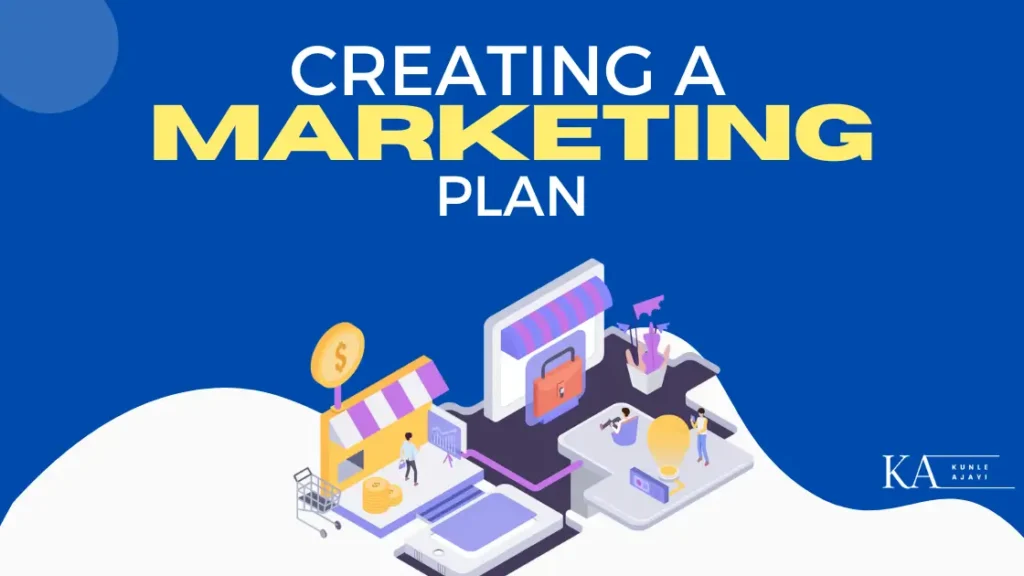I’m sure you’ve heard the phrase “have a marketing plan” if you own a business of any kind or are considering launching one, but have you ever thought if you need to understand “what is marketing” in detail and apply it to your enterprise?
It’s not as hard to market as it would seem. It just comes down to deciding how you will engage with potential clients and what message you want to convey to them. You can use words, images, pricing or product design, your voice, or any combination of these to convey your message.
Indeed! If you want your firm to prosper, you will need to consider how to market it unless you are extremely fortunate.
We’ll go through how to complete your company’s marketing plan in this piece. Before reading this post, make sure you’ve read about identifying your purpose and goals, target market, and marketing strategy if you’re just starting or have never created a marketing plan for your company. It would be easier for you to create your actionable marketing plan below if you define those items first.
Note: I’m going to assume that the majority of my readers are either very small-scale operators or solitary proprietors. The goal of this piece is to help you develop a marketing strategy for a business that size.
This post is not for you if your business is bigger, more well-established, and has a dedicated marketing team or department. My intention in keeping things simple is to assist you in launching and focusing your business promotion. Not every feature found in a textbook marketing strategy or every item in a deep study that could be useful for a more complicated firm will be covered.
Before creating your marketing strategy, we will also take a minute to analyze the good or service that forms the foundation of your company. Organizing your thoughts in a certain way will help your plan come together. The processes for creating your marketing plan as well as the analysis are described below.
Analysis of Your Marketing Plan
1. The 4Ps (Or Marketing Mix)
The four Ps of your business are product, pricing, place, and promotion. This is also known as the marketing mix. Taking the time to consider each of these things provides a solid basis for your marketing strategy. It doesn’t have to be difficult, but for every one of these facets of your company, make sure you comprehend the following information:
- Product: In essence, identify the good or service you are selling, the need or problem it will solve for your clients, and the key features that set it apart from the competition.
- Price: Choose the amount you’ll charge for your good or service. There are numerous approaches one might take with this. Sumo provides some incredibly useful details on various pricing models and methods in this post. If you are a part of an MLM company, a blogger, or you make money through affiliate programs, your product price may already be set for you; but, if you are promoting your goods or services, be sure to give this consideration.
- Place: How will your clients get your product? Are you giving it to them in person? Do you ship goods to clients? Is this a face-to-face service? Your pricing and marketing tactics may change depending on how your clients will receive your good or service. (For example, if your product requires personal delivery, you probably don’t want to be promoting it online all over the world.)
- Promotion: My piece on creating a marketing strategy delves deeper into the analysis of your product or service’s promotion. You must ascertain which channels you intend to use to advertise your good or service.
This post does a wonderful job of walking readers through each of the 4Ps if you’d like a more thorough explanation of how to think about them for your product or service.
2. Competitor Research
Every firm has at least SOME competition, so it’s beneficial to see what some of your rivals are doing with their operations. Examine and consider a few of the following things for each of them:
- What is the cost of them? Should I aim higher or lower? Why?
- In what way do they market their goods or services? Do I wish to use the same platforms to compete? (Perhaps they are advertising from where they are because it’s the most effective way to reach your intended audience! Perhaps not.)
- Which benefits of their product or service are they highlighting? (For example, “it’s easy to use,” “it’s affordable,” and so on.) Do I need to highlight any additional selling elements for my product?
Observing your rivals shouldn’t make you second-guess your entire strategy or convince you that you can’t compete with them. Take caution not to let it affect you in that way. Strive to maintain an attitude of curiosity in what your rivals are doing and search for gaps in the demands that their offerings might be able to address with yours! Observing the actions of your rivals can teach you a lot about what strategies are effective in your industry.
Alright. After reviewing a few analytical things for your company, let’s get started on creating your marketing strategy.
Building Your Marketing Plan
The majority of sources will state that your marketing plan includes information about your target market, marketing strategy, mission and vision, and more in addition to the analysis mentioned above. Including all of these things and more in your official strategy is more textbook right?
Personally, though, I think it’s more beneficial to consider all of the other information and data before moving forward with my actual “plan” for marketing. Regardless of how you want to view it, each thing is significant, so be sure you have given them careful consideration. I’ve dissected them in my posts for you because I dissect them in my head.
Consequently, even though I refer to it as the marketing plan, the things listed below are essentially those that I believe are crucial to take into account while creating your company’s “promotional plan of action.”
1. The budget
You may or may not need to take this into account for your company. This item doesn’t apply to you if your marketing approach is limited to using social media or joining free community organizations to generate word-of-mouth advertising for your product or service (unless you intend to utilize some promoted social media posts). But if any type of printed promotional material—flyers, business cards, mailings, etc.—is a part of your marketing strategy, with paid advertising, then you must plan your budget carefully to avoid unexpectedly incurring more costs than your business can afford.
I suggest allocating a certain amount of money for promotions each month and outlining exactly how that money will be used. I suggest doing this because seasonality may influence when you want to run specific promotions, and it may also affect how much you want to spend in a given month depending on whether your business makes more or less money in a given month. You may avoid overspending and keep your spending focused on goals by making a monthly budget and spending plan, which will prevent you from making impulsive purchases.
2. Brand & Message
I’ll go into greater detail on branding in a later piece, but in general, it’s critical to decide on the “image” and message you want to convey to your target market through all of your promotional efforts. Your marketing plan has already established WHERE you want to reach your target audience but now is the time to consider WHAT you want to say to them and how you want to be seen.
Recall the 4Ps you used to analyze your product and the competitive landscape. What distinguishes your offering, good or service? Or what issue does your client’s use of your product or service resolve? What is it that your product or service can offer that your rival cannot?
Think about how you want your target market to see you, taking into account all of these factors.
To make it easier for you to refer to this list while you go about your everyday business operations, I advise jotting down these items.
You can build some of your branding after you know what your selling points are and how you want to be seen. (You can choose the consistent voice you want to employ, as well as develop a logo, brand colors, and picture types.) Additionally, you’ll be crystal clear about your message every time you display a poster, post anything on social media, or have a conversation with a local.
3. Schedule your Promotions
Creating a promotional schedule, in my opinion, is the result of finishing your marketing analysis. This “plan of action” is your last one.
Essentially, the goal of this step is to organize your promotional budget and marketing strategy to determine precisely what promotional activities you will run and when. Depending on your industry, it could be beneficial to get out a one-year calendar and jot down all the information on particular dates. This is particularly useful if your marketing plan calls for distributing print materials, which must be created and produced well in advance of the date you intend to distribute them.
A small amount of preparation can go a long way toward keeping your business on track in terms of attracting prospective clients.
Because it heavily depends on your marketing approach, every firm will have a distinct idea of what constitutes a promotional program. To ensure that all of the preparation work is completed and your budget is not surpassed, it might need to be meticulously planned out on a schedule. It might not, however, really need to be so exact.
I don’t have a daily or even monthly schedule of my promotional plans for myself and my blogs. I do, however, adhere to a broad (unwritten) monthly promotion schedule that entails frequent social media posting.
Although every business is unique, it’s crucial to have a strategy in place to connect with potential clients, no matter how detailed or general.
Just a little note to wrap up…
A plan is necessary, but don’t let yourself become so bogged down in finishing your analysis and organizing your strategy that you neglect to act! Without taking some sort of action, your firm will undoubtedly not expand. Commence promoting your business even if all the details aren’t quite completed! You can always reassess, rebrand, or refocus as you go along. You will learn as you go. I feel ashamed of how my first blog seemed when I first started sharing it online, but that first step toward publication allowed me to grow and learn from it.
Even if you believe you have the ideal plan in place before moving forward with your firm, you will probably discover that as you gain a deeper understanding of your industry and witness some progress, you need to adapt and revise it.
Allow a plan to direct your company, but don’t let it prevent it from beginning or from growing.




